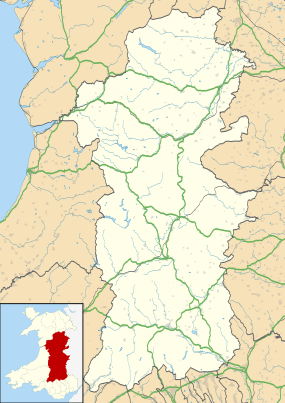Whetstones (stone circle)
 Shown within Powys | |
| Location | Corndon Hill |
|---|---|
| Coordinates | 52°34′16″N 3°01′41″W / 52.57108°N 3.02803°W |
| Type | Stone circle |
| History | |
| Periods | Neolithic / Bronze Age |
The Whetstones are, or were, a stone circle beneath Corndon Hill on the border of Powys, Wales and Shropshire, England. They lie immediately to the west of the village of White Grit and close to Priestweston.[1] The site is also a short distance from the better-known Hoarstones and Mitchell's Fold circles.
The circle was largely destroyed in the 19th century, and only a few fragments now remain.[1] An 1841 account described them as even then fragmentary, but comprising three main stones, then "leaning, owing to the soft and boggy nature of the soil. They stand equidistant and assume a circular position [...] The highest of these is four feet above the surface; one foot six inches in thickness, and three feet in width."[2] In 1860, the antiquarian Robert William Eyton still referred to the Whetstones as a "remarkable monument",[3] but they were later stated to have been dug up, and the stones incorporated into a boundary wall, in about 1870.[4] Aubrey Burl notes that "nearly all of its stones were blown up in the 1860s [...] when the last stone was uprooted around 1870 charcoal and bones were seen".[5]
The remnants of the circle can still be observed from an adjacent field boundary, or from the northern summit of Corndon Hill.[1] Large stones are also visible now forming a boundary next to a footpath, which were probably also once incorporated in the circle.[1]
References
- 1 2 3 4 The Whetstones, Megalithic Portal
- ↑ Hartshorne, C. H. Salopia Antiqua, London: J W Parker, 1841, p.33
- ↑ Eyton, R. W. Antiquities of Shropshire, Volumes 11-12, J.R. Smith, 1860, p.159
- ↑ "The History of Chirbury" in Transactions of the Shropshire Archaeological and Natural History Society, 1906, 231
- ↑ Burl, A. A guide to the stone circles of Britain, Ireland and Brittany, Yale University Press, 2005, p.175